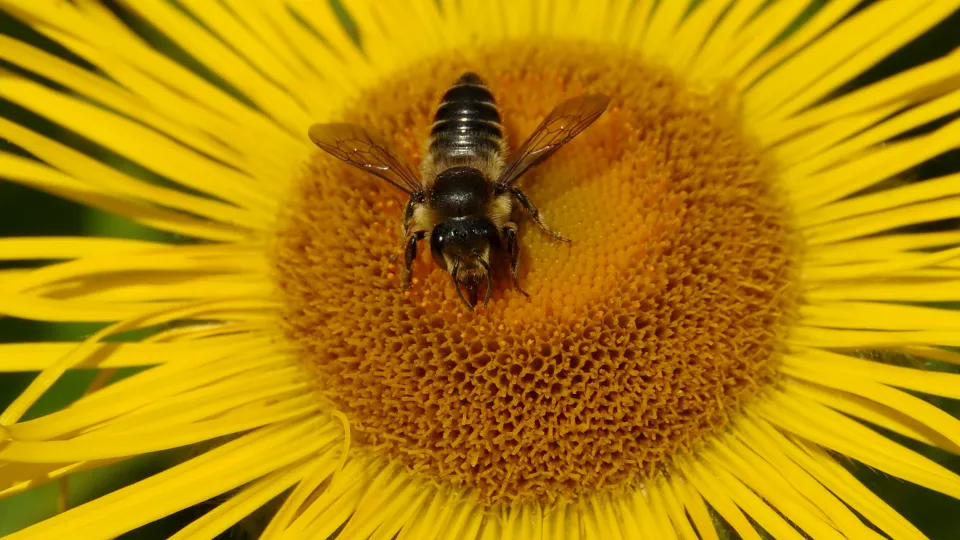
Patchwork leaf-cutter bee
The appearance of semi-circular holes in the leaves of your garden plants is a sure sign that the patchwork leaf-cutter bee has been at work. It is one of a number of leaf-cutter bee species present in the UK.

The appearance of semi-circular holes in the leaves of your garden plants is a sure sign that the patchwork leaf-cutter bee has been at work. It is one of a number of leaf-cutter bee species present in the UK.
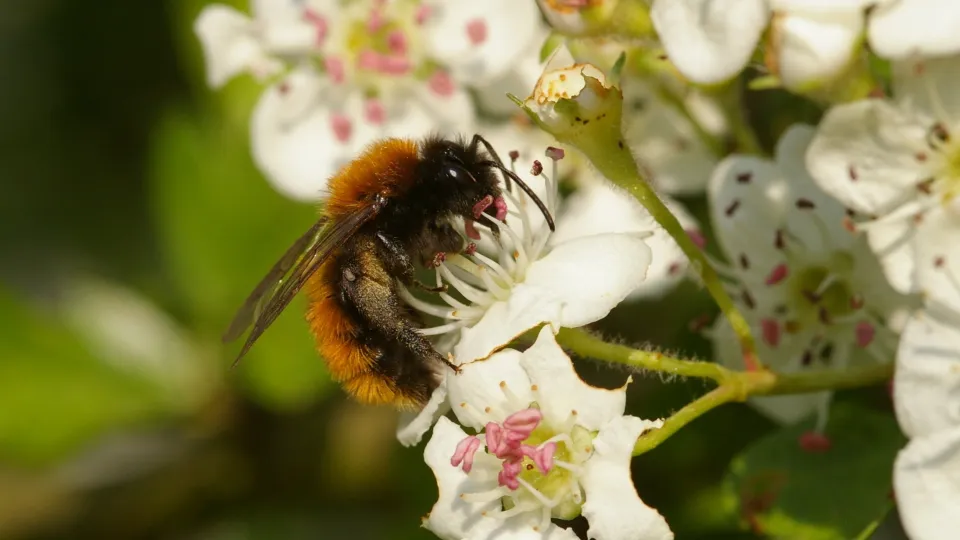
The Tawny mining bee is a furry, gingery bee that can often be seen in parks and gardens during the springtime. Look for a volcano-like mound of earth in the lawn that marks the entrance to its burrow.
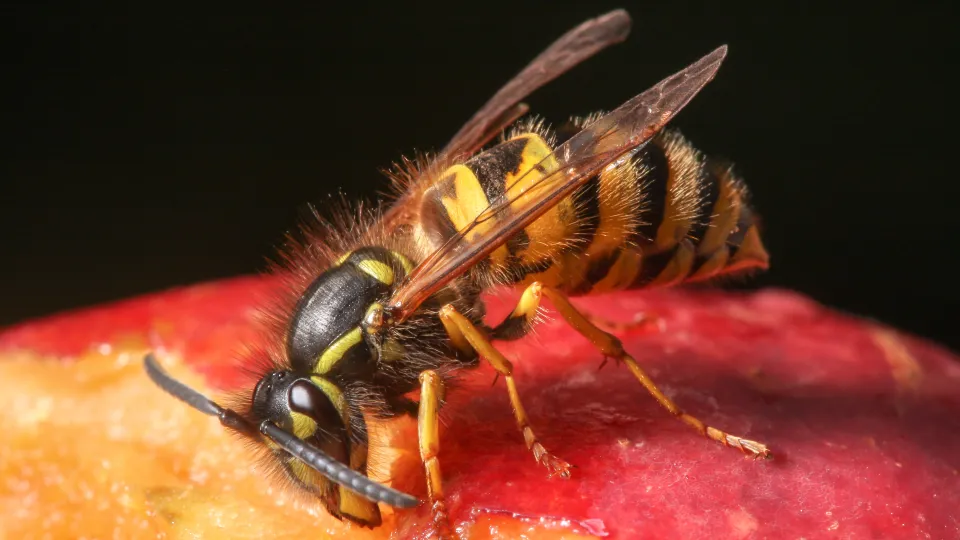
Wasps are well-known, and unfortunately not very well-loved! But give these black and yellow guys a chance, as they are important pollinators and pest controllers.
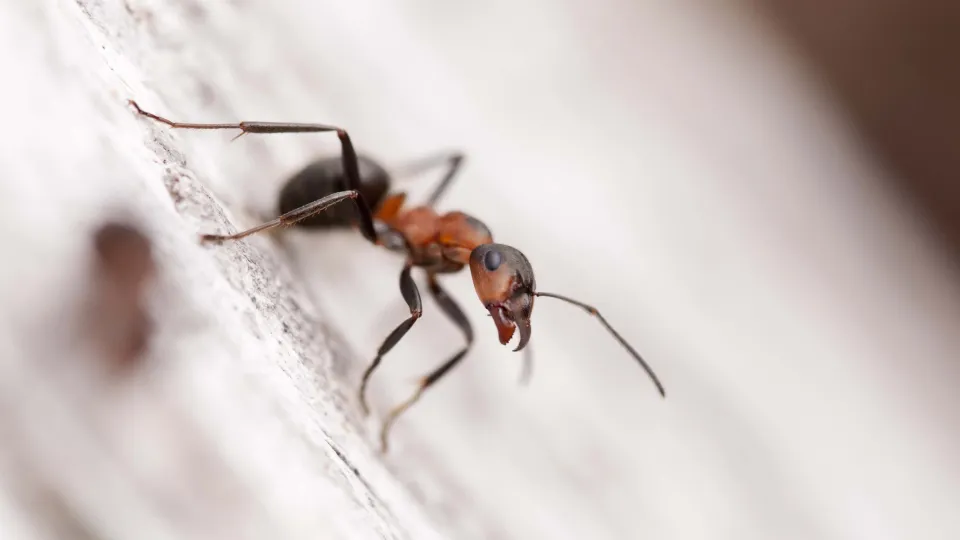
The most common wood ant is the southern wood Ant, or 'red wood ant', which is found in England and Wales. An aggressive predator, it plays a vital pest control role in our woodlands.
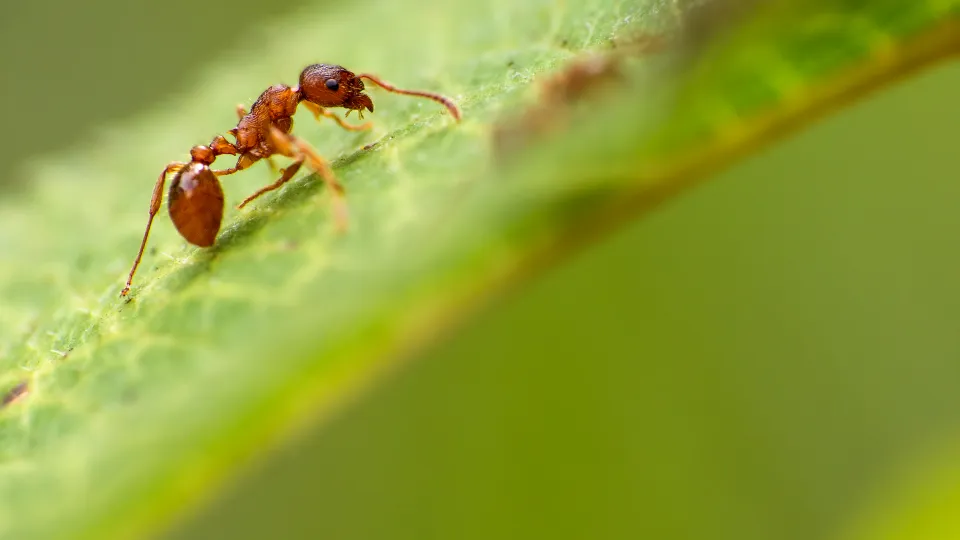
Turn over large stones or paving slabs in the garden and you are likely to find a Red ant colony. This medium-sized ant can deliver a painful sting, so be careful! In summer, winged adults swarm and mate.
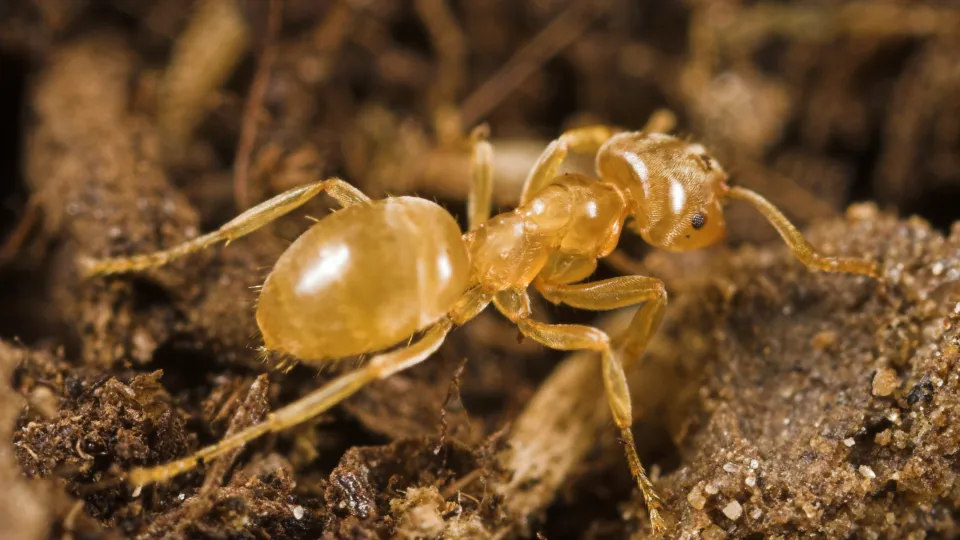
The yellow meadow ant is known for creating anthills in grassland habitats. It has a close relationship with the Chalkhill blue butterfly - protecting the larvae in return for a sugary substance they secrete.
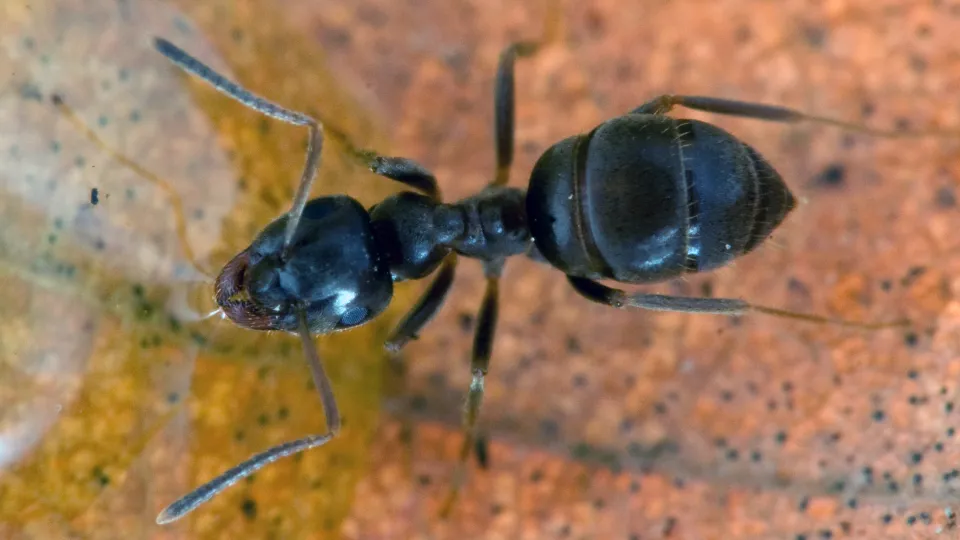
The black garden ant is the familiar and abundant small ant that lives in gardens, but also turns up indoors searching for sugary food. In summer, winged adults, or 'flying ants', swarm and mate.
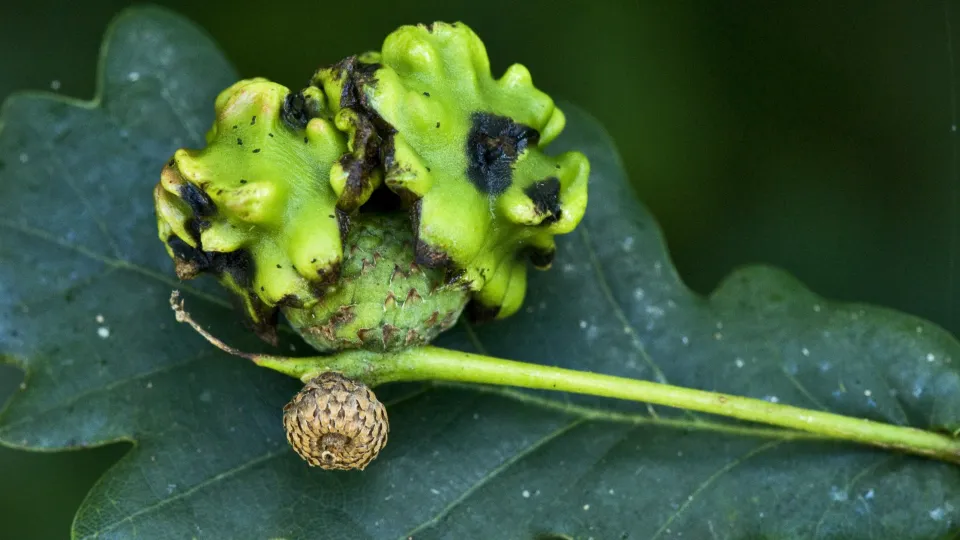
The knopper gall wasp produces knobbly red, turning to brown, growths, or 'galls', on the acorns of Pedunculate Oak. Inside the gall, the larvae of the wasp feed on the host tissues, but cause little damage.
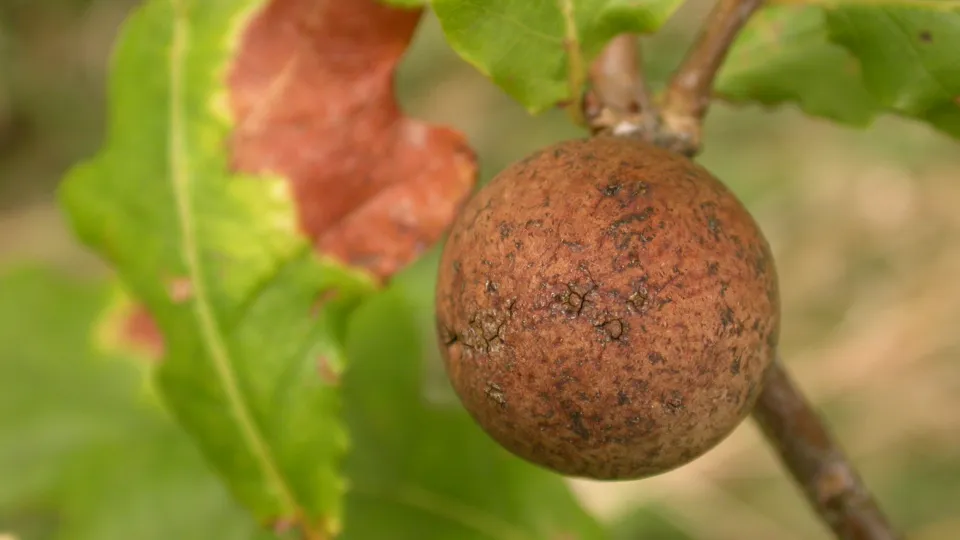
The oak marble gall wasp produces brown, marble-shaped growths, or 'galls', on oak twigs. Inside the gall, the larvae of the wasp feed on the host tissues, but cause little damage.
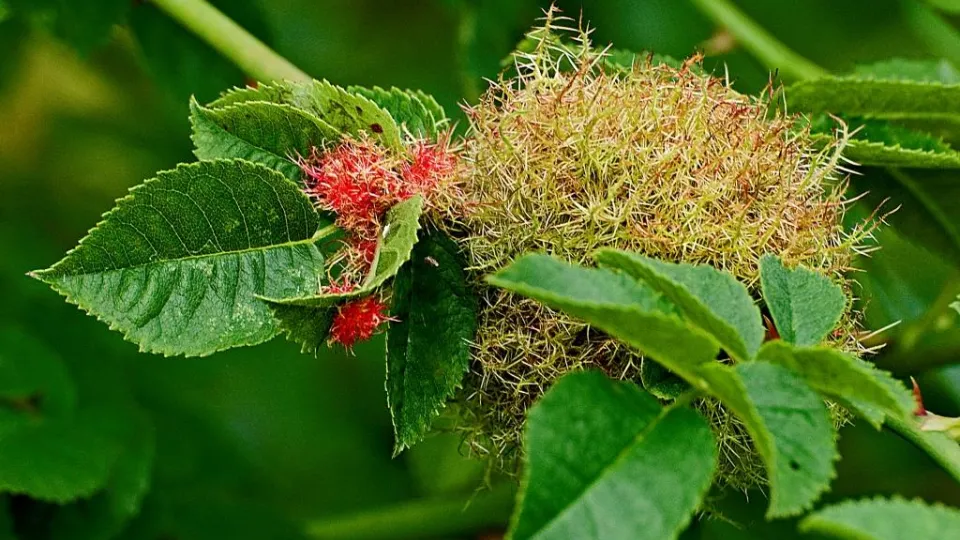
Living up to its name, the Robin's pincushion is a red, round, hairy growth that can be seen on wild roses. It is caused by the larvae of a tiny gall wasp that feeds on the host plant, but causes little damage.